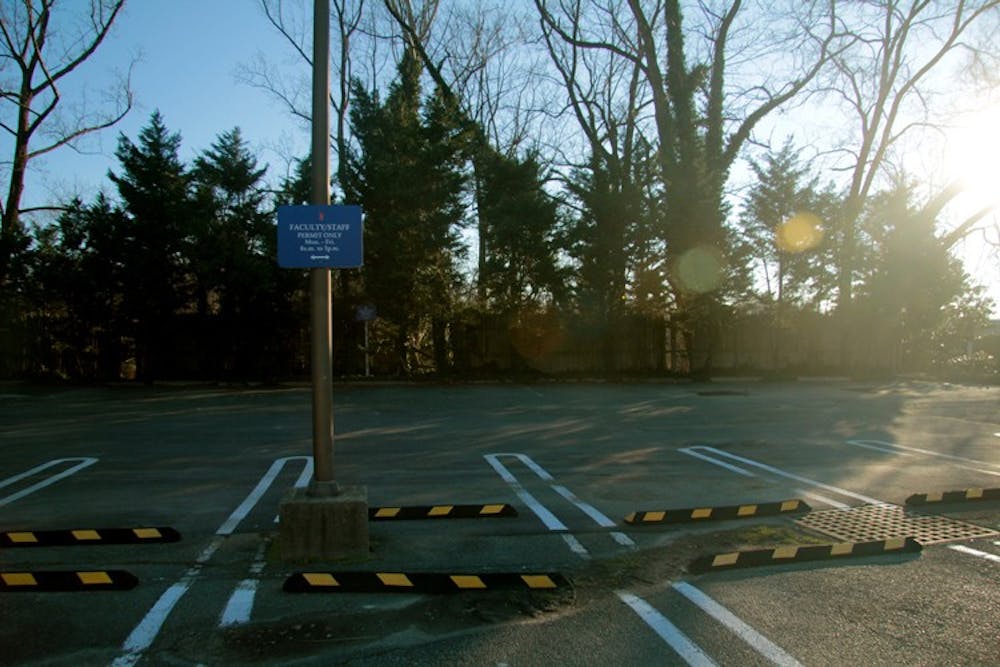Correction appended
The Army Corps of Engineers found Civil War-era relics, including a piece of a cannon, while looking for chemical munitions and testing the groundwater a mile from campus over winter break.
“We’re looking for buried metallic objects we call anomalies,” said Clem Gaines, public affairs specialist at the Army Corps of Engineers in Baltimore.
The Army Corps used metal detectors to find burial sites where the Army discarded materials used when AU was an “experimental station,” Gaines said.
Army Corps planned to investigate about 18 sites. The Corps investigated most of them by January and will investigate four more sites in March, Gaines said.
The Army Corps still needs to dig under the Kreeger parking lot in four different locations. The Army Corps is waiting until spring break to continue digging, Gaines said.
AU administration expects the Kreeger portion of the Spring Valley clean-up to finish by the end of 2013, according to AU Chief of Staff David Taylor.
The formal search for buried munitions began after “military objects” were found in Spring Valley in 1993, The Eagle reported in 2004.
The soil near Kreeger was tested in 2006, and high arsenic levels were first discovered on campus in 2001, The Eagle previously reported.
The Army Corps’ activities will not interfere with the Campus Plan, since the Army Corps has already investigated areas impacted by the Plan, Taylor said.
“There is also a provision written into the Campus Plan, an understanding to inform the Army Corps before we put shovel in ground,” he said.
The Army Corps is also monitoring groundwater for perchlorate, a chemical used in the manufacturing of rocket fuel, missiles, fireworks, flares and batteries, according to the California Department of Toxic Substances Control.
The perchlorate level in Spring Valley was 146 parts per billion (ppb) in 2006, and the Army Corps brought it down to about 22ppb, Hengst said.
However, that number is still much higher than Environmental Protection Agency guidelines, which call for only 15ppb of perchlorate in drinking water.
D.C. has no enforced regulations on perchlorate concentration in groundwater but instead recommends following the EPA’s guidelines.
“Groundwater is poured into the [Dalecarlia] reservoir,” Allen Hengst said, a librarian at AU’s Pence Law Library and a self-proclaimed “environmental activist” who has blogged about the clean-up project over its 19-year history. “Freshwater from the Potomac is pumped in[to the reservoir] every day, so the perchlorate is diluted.”
However, Gaines said Spring Valley gets its water from the Potomac, not from its groundwater.
“All drinking water in Spring Valley comes from D.C.,” he said. “Nobody in Spring Valley drinks water from Spring Valley.”
The Army Corps is in the last stages of its plan to demolish the AU-owned house at 4825 Glenbrook Rd. The house will be taken down by late March after the restoration plan is finalized, Gaines said.
The Army Corps hopes for the “removal of the house and restoration of the property for residential use,” Gaines said.
The Army Corps will be tearing down the building because it discovered contamination at the site in the past.
A March 2010 investigation was halted after a bucket of fuming arsenic trichloride was found, The Eagle previously reported.
After demolishing the property, the Army Corps will investigate the soil all the way to the bedrock and restore the arsenic level to 20 parts per million, Hengst said.
AU wants the level down to 12.6 parts per million, according to Hengst.
“USACE [U.S. Army Corps of Engineers], in consultation with our partners – EPA and DDOE – has decided to continue to use the established remediation goal for arsenic,” said Brenda Barber, the Army Corps’ Spring Valley program manager.
The three organizations agreed that level was healthy and natural in comparison to other measurements of arsenic content in soil around the D.C. area, Barber said.
The Army Corps does not maintain a well to monitor the perchlorate level at the 4825 property, Gaines said.
“We’ve been doing groundwater study for some time, and any time we’ve found perchlorate values higher than the EPA regulations, we’ve seen those perchlorate values declining,” Gaines said.
AU will be in negotiations with the Army Corps from March to June so the Corps can demolish the building during summer break
Army Corps real estate officials are discussing the value of the property with AU so the Army Corps can purchase it from the University, Gaines said.
The Glenbrook Rd. property is the only AU-owned property that is left for extensive investigation, he said.
AU President Kerwin’s home is right next to the 4825 property but is no longer in need of contamination investigations.
News@theeagleonline.com
This article previously stated that EPA guidelines required perchlorate levels in drinking water to be 1 ppb. The EPA calls for 15 ppb and EPA guidelines for perchlorate in food call for 1 ppb. This article also previously said the Army Corps was reducing perchlorate levels at the Glenbrook property to 20 parts per billion and that AU wants it as 12.6 parts per billion. Rather, the Army Corps is trying to reduce arsenic levels to 20 parts per million and AU wants arsenic levels below 12.6 parts per million. The article also quoted Hengst as saying groundwater from Spring Valley is funneled into the McMillan Reservoir. Hengst was actually talking about the Dalecarlia Reservoir. The article also said Army Corps found a piece of a cannon near Kreeger. The Civil War-era relics, including a piece of cannonball not cannon, was found about a mile away from campus in the Dalecarlia Woods.





